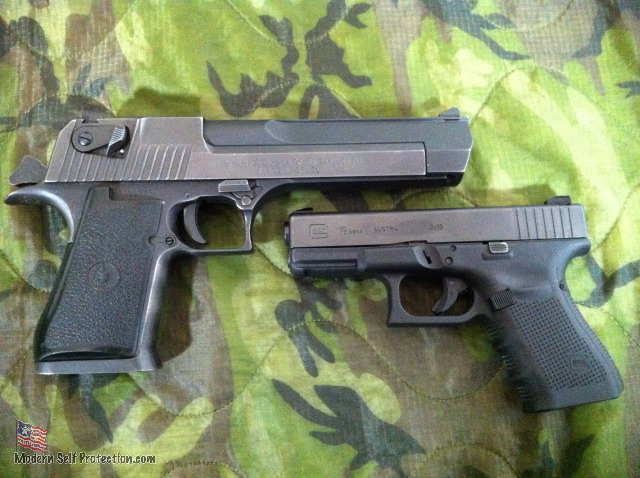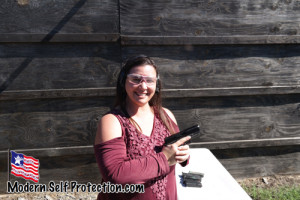Getting a new gun is exciting, even more so with the latest model. I love new stuff, and by the amount of hits I get on this blog and my podcast, when I post about new guns, you do, too.
That’s okay. When I was in the Marine Corps, I loved and tested every new piece of equipment I could get my hands on. But I did an evaluation based on need, not want. For example: I’m a tech guy (you are, too, I know it), and the Corps has just bought new folding computers with a mortars ballistic computer on it to test against doing the calculations manually. I beat the computer side by side every time on the range. So they scrapped it. I wanted the computer but wanted it improved. The interface sucked and was hard to use. It took forever to put all the data in so the computer could do its thing. By the time all the data was in correctly, the manual computations were complete. I won’t lie, beating the computer felt good, but I wanted the new tech because it was new, it wasn’t any better.
With everything we get or can get new, we need to evaluate it honestly to see if it’s a need, will help us be safer, or we just want it. When it comes to a handgun, we really need to evaluate it and make sure it fits. Your life may depend on it.
How can you evaluate a handgun and test it to see if it’s the right gun for you?

Size in Use
What I really mean is will you carry it for the use you have for it? A Desert Eagle is a really cool handgun and I enjoy owning one, but it doesn’t work for concealed carry. I even carried a .44 Magnum version on duty at an armored car company for a little while before I determined it wasn’t the right gun for my self protection. You could make an equally crazy decision because the new gun is “awesome” and you just have to have it. A Glock 17 Gen 5 is the newest, bestest thing Glock has, so you just have to have one? Right? Not really. If you normally carry a Glock 43 (the subcompact single stack 9mm), then going to the newest Glock 17 (a full-sized duty gun) isn’t going to work for your concealed carried.
Once you have the size right, then what?
Practice
Start with the basics of dry fire. Make sure the gun is empty, then point and “shoot” at a target a bunch of times. Do the simple dry fire for about 10 minutes a day for a week.
After the first week of just pulling the trigger, now start working out of the holster or style carry you want to use. Simply unload the gun, place the gun into the holster, then pull and click on a target. Work that for about a week, 10 minutes a day.
After you have done the dry fire work and holster work, now you can look at reloading and how easy the action is to work. Most of the time, we all do this in a backwards way. We want to know how easy the slide is to rack and how reloads go. But those are the least likely things you will ever need in a self defense gun and the easiest to train into.
After all that work, pulling the slide will be really easy. Manipulating the gun for a reload will be really easy, also. The slide and magazine manipulation aren’t a deal breaker, just something to know about the gun you are testing.
Train
Last, get out and do some live fire at the range. The best way to really test a gun is get to a training class. I did all the above for dry firing, and have gone to the range with a Glock 19 Gen 5 and was thinking I liked the gun.
But this last weekend I took Paul Carlson’s Critical Defense Pistol Handgun Training class and found out that I don’t like the gun at all. I spent the first day of the 2-day class with the Glock and shot well, and everything else worked well on the gun.
After using the gun for a full day and shooting 310 rounds through it of hard training, I found that the gun has sharp spots that just don’t work for me. My fingers are still irritated by one spot, and the gun doesn’t point very well for me. I really had trouble up close and personal because the gun always wanted to point up for me and then bounce off target during recoil. Then the sights never seemed like they wanted to line up on their own, I was always fighting them.
Your mileage may vary and probably will. There are people that say the Glock is the best pointing and shooting gun ever made. And if that’s you, that’s great. Because you’ve tested that gun, shot it a bunch, and figured out it’s the one for you (and hopefully taken more than one class with it).
Take your new gun and gear to a professional class. You will be amazed at what you learn about yourself, your equipment, and the gun. By the end of the day, you’ll know whether the gun and gear you are shooting is right for you.
Conclusion
Yes, all this takes time, effort, and money. But your life is worth it. If you are trying to pick a defensive gun to carry, test it a lot. Do the dry fire, then go to the range and shoot, and then take a defensive shooting class to be sure it’s the right gun for you. If the Glock works, just take it and keep going. If it’s a Smith & Wesson, or any other gun that works, go for it!
Just test your gun to make sure it fits you like you want it to. Just because it’s the newest thing on the market doesn’t mean it’s the best for you.
Stay Safe,
Ben
